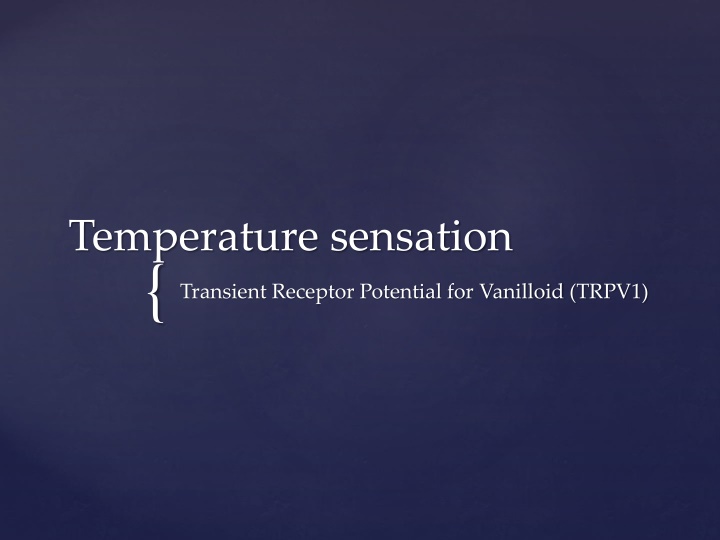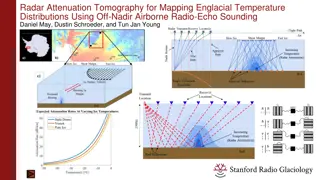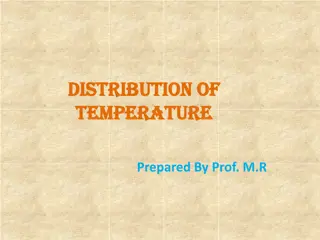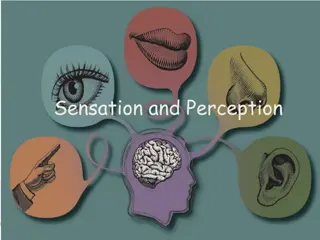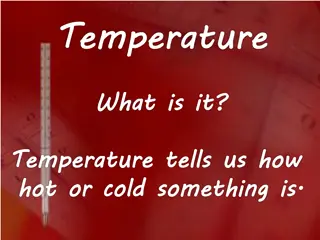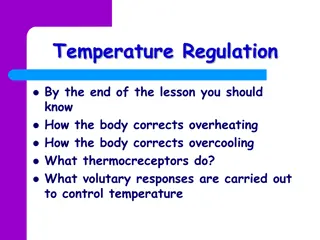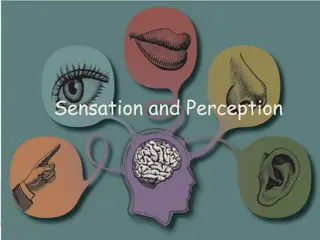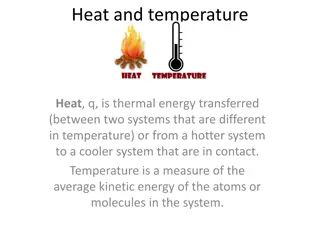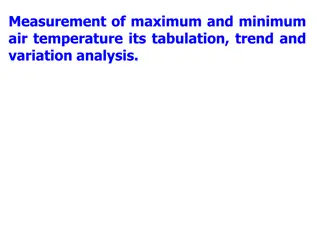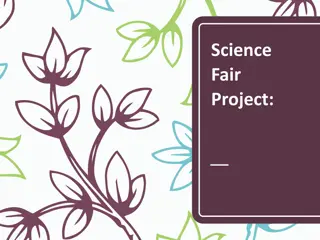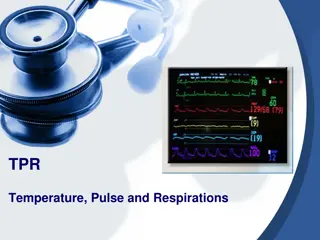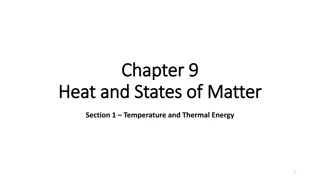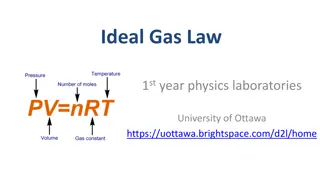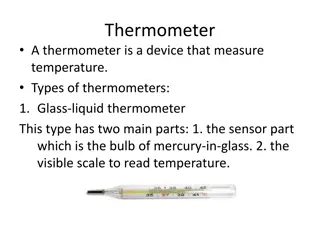Temperature sensation
Delve into the fascinating world of temperature sensation and ion channels, where our perception of temperature is explored through the intricate workings of transient receptor potential for vanilloid (TRPV1). Uncover the mechanisms behind how we feel temperature, from action potential firing to stimuli like kinetic motion and infrared light. Discover the role of specialized receptors such as Bulb of Krause and Ruffini Endings in detecting cold and hot temperatures, respectively. Explore the interplay of energy sources, ionophoric proteins, and the regulation of ion channels in creating electrochemical gradients essential for various biological processes.
Download Presentation

Please find below an Image/Link to download the presentation.
The content on the website is provided AS IS for your information and personal use only. It may not be sold, licensed, or shared on other websites without obtaining consent from the author.If you encounter any issues during the download, it is possible that the publisher has removed the file from their server.
You are allowed to download the files provided on this website for personal or commercial use, subject to the condition that they are used lawfully. All files are the property of their respective owners.
The content on the website is provided AS IS for your information and personal use only. It may not be sold, licensed, or shared on other websites without obtaining consent from the author.
E N D
Presentation Transcript
Temperature sensation { Transient Receptor Potential for Vanilloid (TRPV1)
Conclusion Our sense of temperature is not accurate, we rely on devices. Overview How do we feel? What makes us feel ? TRPV1
We feel because of Action Potential firing Model of Action potential firing 1.Stimulus active Receptor 2.Receptor triggers ion channel open 3.Ion channel opening causes neuron firing
Stimuli Kinetic Motion Infrared Light Interchangeable
Bulb of Krause: Cold temperature. Ruffini Endings: Hot temperature Others are in our tongue
Model of Action Potential Firing Threshold:-55mV Voltage-gated ion channel open
Energy source Electrochemical gradient Chemical gradient Electrical Potential
Ionophoric Proteins (Transmembrane proteins) Ion Channels Ion Transporters (Pumps)
Regulation of Ion Chanel and Pumps creates electrochemical gradients around phospholipid bilayer membrane Primary energy source Chloroplast(Photosynthesis) Mitochondrion(ATP Synthesis) Cell membrane(sensation, Substance exchange) Ex. Electric Eel, Symplocarpus foetidus (Skunk Cabbage), heart beats
Energy is established by Ion Pumps Energy Then is utilized by ion channel
Ion Transporters(pumps) Proteins convert energy from various sources, including ATP, sunlight, and other redox reactions, to potential energy stored in an electrochemical gradient. Sodium potassium pumps Calcium Pumps
What makes us feel? Ion channels opening Passive transport Using electrochemical gradient energy creates neuron information
The ion channel responsible for temperature sensation are TRP Channels Transient Receptor Potential Channel(TRP) Voltage-gated Ligand Calcium and sodium
TRP ion channels were first described in Drosophila melanogaster in 1989 and in mammals several years later. Vision related
Introduction of techniques including voltage clamp, patch clamp, immunohistochemistry, X-ray crystallography, fluorescence, and RT-PCR studying TRP channels.
Our basic temperature feelings are COLD, WARM, and HOT Ion Channels are specialized
Discovery of TRPV1 David Julius isolated cDNA encoding capsaicin (vanilloid) receptor through expression cloning. Shortly afterward, it turned out to be heat sensor and structural homologues of the fly trp channels. Independently. VR1 = TRPV1
TRPV1(838aa) Gene Function Regulation
Function TRPV1 on our skin and tongue can be opened by heat. Ions(Calcium, sodium) flow in, triggering action potential firing Not limited in Heat sensation Pressure Pain Inflammatory response
Attempt to understand high is heat measured in our body Functional Role of C-Terminal Cytoplasmic Tail of Rat Vanilloid Receptor 1 ---The Journal of Neuroscience, 15 February 2003
Still no definite conclusion saying the C terminal is the only part responsible for heat detection. They use whole cell, and reuse after 30seconds washout Similar experiment claim the C terminal of TRPM8 is also responsible for Cold detection
Immunofluorescence of rat found that TRPV1 expressed not only skin, but bladder, intestine, trachea and brain(dorsal root ganglia). Osmo- and Mechanotransduction function in bladder.
Extreme temperature is harmful TRPV1 and TRPA1 are nociceptors
TRPA1 (<16 C or 60 F) and TRPV1 (>39 C or 102 F) are nociceptors pain sensation and they are co-expressed(La Jolla, 2003). Pain is still unknown mechanism Paradox analgesic effect: Applying capsaicin on skin
Regulation of TRPV1 Sensitization Vanilloid Protein Kinase A, PKC Proton, acids Voltage (Calcium, soudium) Anandamide (arachidonic acid, Inflammatory) Desensitization PIP2 Phosphatase
Inflammation bradykinin Histamine SP TrkA TRPV1 Firing
